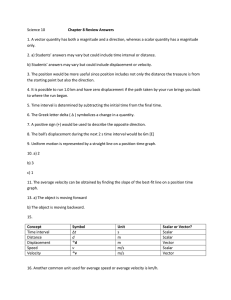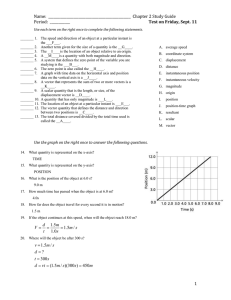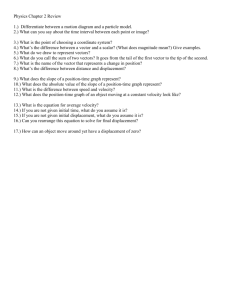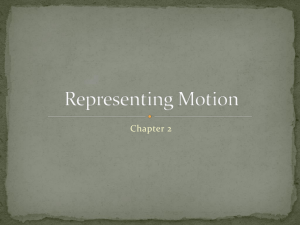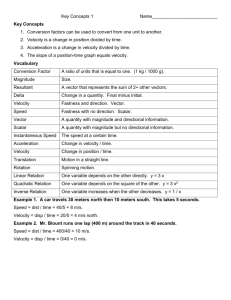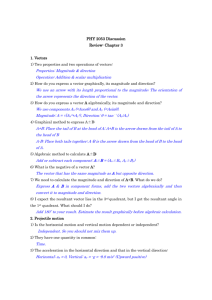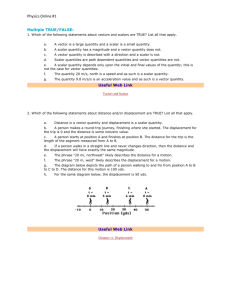Scalar and Vector Quantities
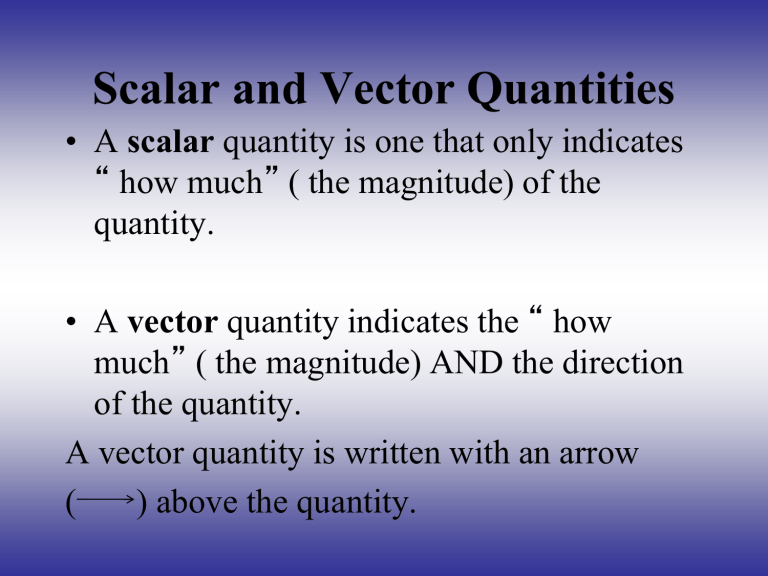
Scalar and Vector Quantities
• A scalar quantity is one that only indicates
“ how much ” ( the magnitude) of the quantity.
• A vector quantity indicates the “ how much ” ( the magnitude) AND the direction of the quantity.
A vector quantity is written with an arrow
( ) above the quantity.
Vector directions;
When working with vectors
(especially adding vectors), we need to know how to represent the direction. Our textbook looks at 2 different methods (see pages 139 and 140).
1. X – axis method
[up] and [right] are positive
[down] and [left] are negative
Other directions are given in degrees from the right axis (x-axis) in a counter clockwise direction.
2. Navigator method (compass)
[N] and [E] are positive
[S] and [W] are negative
Other directions are given in degrees from [N] in a clockwise direction
Distance and Displacement
• Distance is a measurement of the change in distance of an object moving from a starting reference point. Distance is a scalar quantity.
Example: ∆d = 5 m
• Displacement is a measurement of the change in distance and the direction or the change in position of an object from a reference point.
Example: ∆d = 5 m [right]
Speed and Velocity
• Speed describes the rate of motion of an object. Speed is a scalar quantity.
Example: v = 100 km/hr
• Velocity describes both the rate of motion and the direction of an object, so velocity is a vector quantity.
Example: v = 100 km/hr [E]
• Velocity is a vector quantity, so you must state its magnitude and direction.
Average velocity = displacement time v = ∆d
∆t v = d final t final
- d initial
- t initial
The units for velocity are the same as speed; metres/second (m/s) but you ALSO include a direction in square brackets behind the units given. Example; 10m/s [west]
Example Problem B1.6 page 141
Practice Problems #8, 9, 10 page 141
Using Graphs to Analyze Average Velocity
NOTES provided.
– Position-time graph
Is similar to distance-time graph (determining average speed by slope of the line) except that velocity and position (displacement) are vector quantities and must be stated in terms of magnitude and direction
Average velocity = slope
– Velocity-time graph
Is similar to speed-time graph (determining distance by calculating area under the line) except that velocity is a vector quantity and must be stated in terms of magnitude and direction
Area = ∆v x t
Check and Reflect page 145 #1, 2, 3, 4, 5, 6
